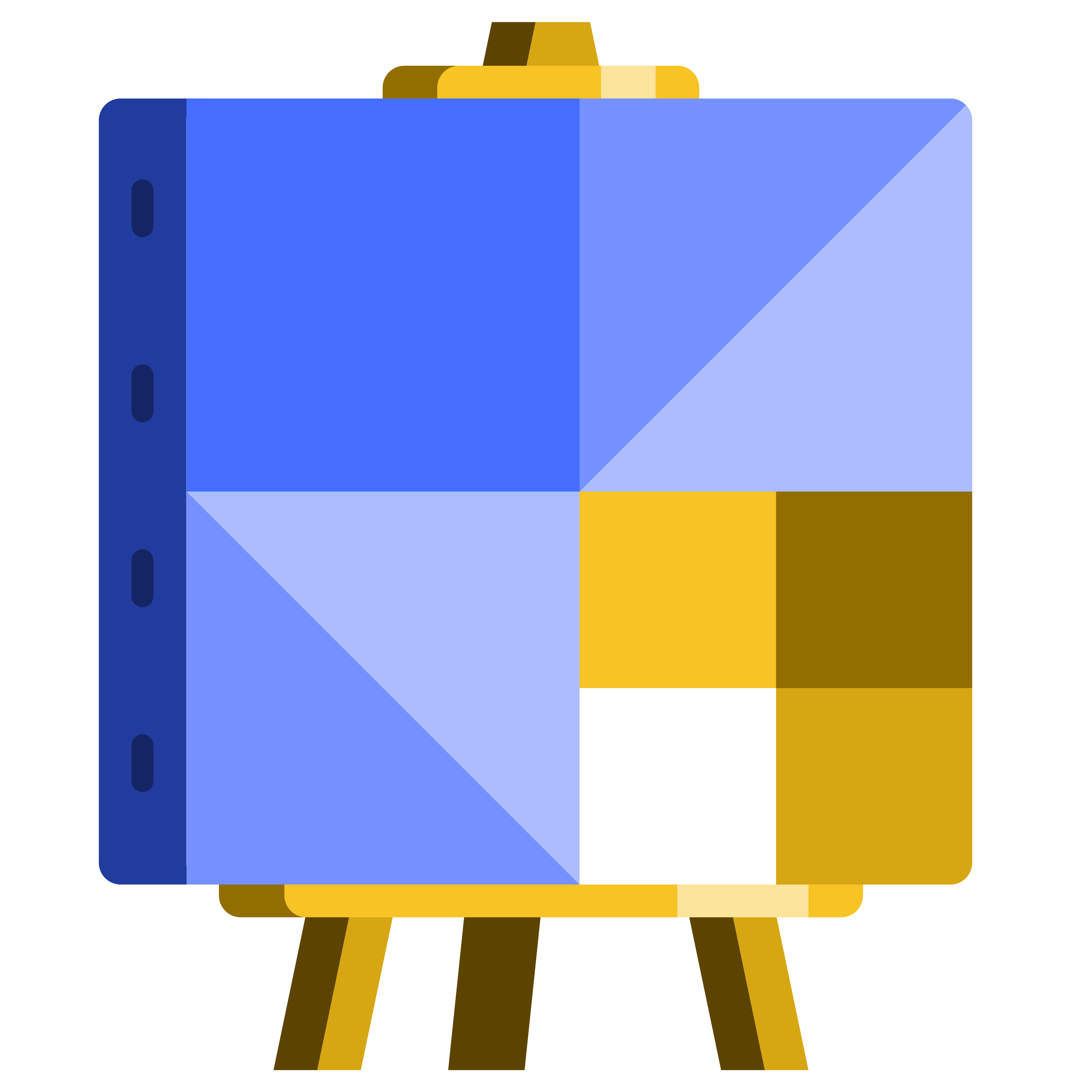Let's look at equivalent fractions visually to find what fraction of this shape is yellow. Let's see how many equal parts it contains. If we divide it in triangles, there are eight in total.
Now let's count the yellow ones. There are six yellow triangles. So the fraction is 68.
Here's the same shape, but now the top right triangles and bottom left triangles have been divided in half. So each of the larger triangles has two smaller triangles. Since there were originally eight larger triangles and we can cut each one into two, then there are 16 smaller triangles in total. Then there are 12 smaller yellow triangles.
The fraction is 1216.
We can rearrange the shaded areas of the last two shapes like this. The shape has four equal parts and three of them are yellow. So 68 and 1216 both equal 3/4s.
These numbers are equal because they represent the same portion of the shape.
Taking this shape and dividing it into more parts doesn't change how much of the area is shaded. Here it's divided into eight triangles and six of them are yellow. Here it's divided into 16 smaller triangles and 12 of them are yellow. This shows how 3/4s 68 and 126 are all equivalent. Let's apply this idea. What fraction of this shape is pink? If we split each of the triangles into two parts, then we can count that there are 16 equal parts and eight are shaded. So 8/16 of the shape is pink.
What fraction is equal to 86. One way to visualize this is to see that the shape can also be divided into eight equal parts.
Four of these parts are shaded pink. So the fraction is 4/8.
This brings us to the main idea. The same fraction can be written in different ways. It all depends on how many parts the whole is divided into. We can describe it as 8/16 if we count the 16 small parts. Or we can see it as 4/8 if we group the smaller parts. Both fractions represent the exact same amount.

